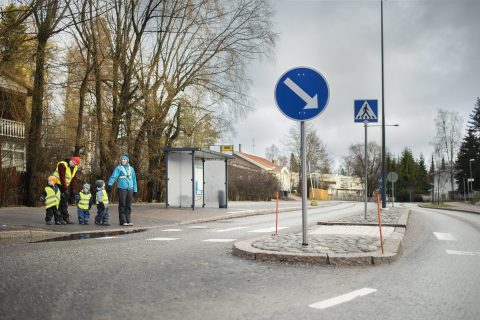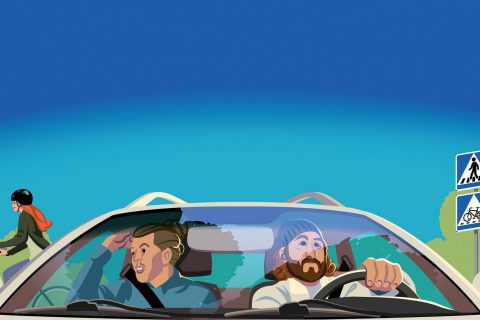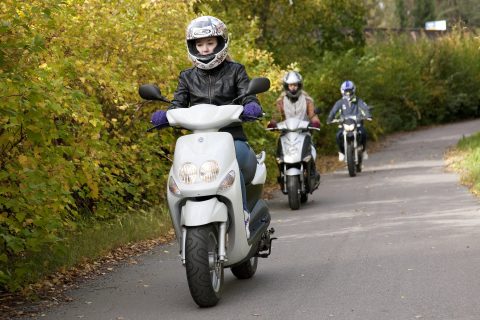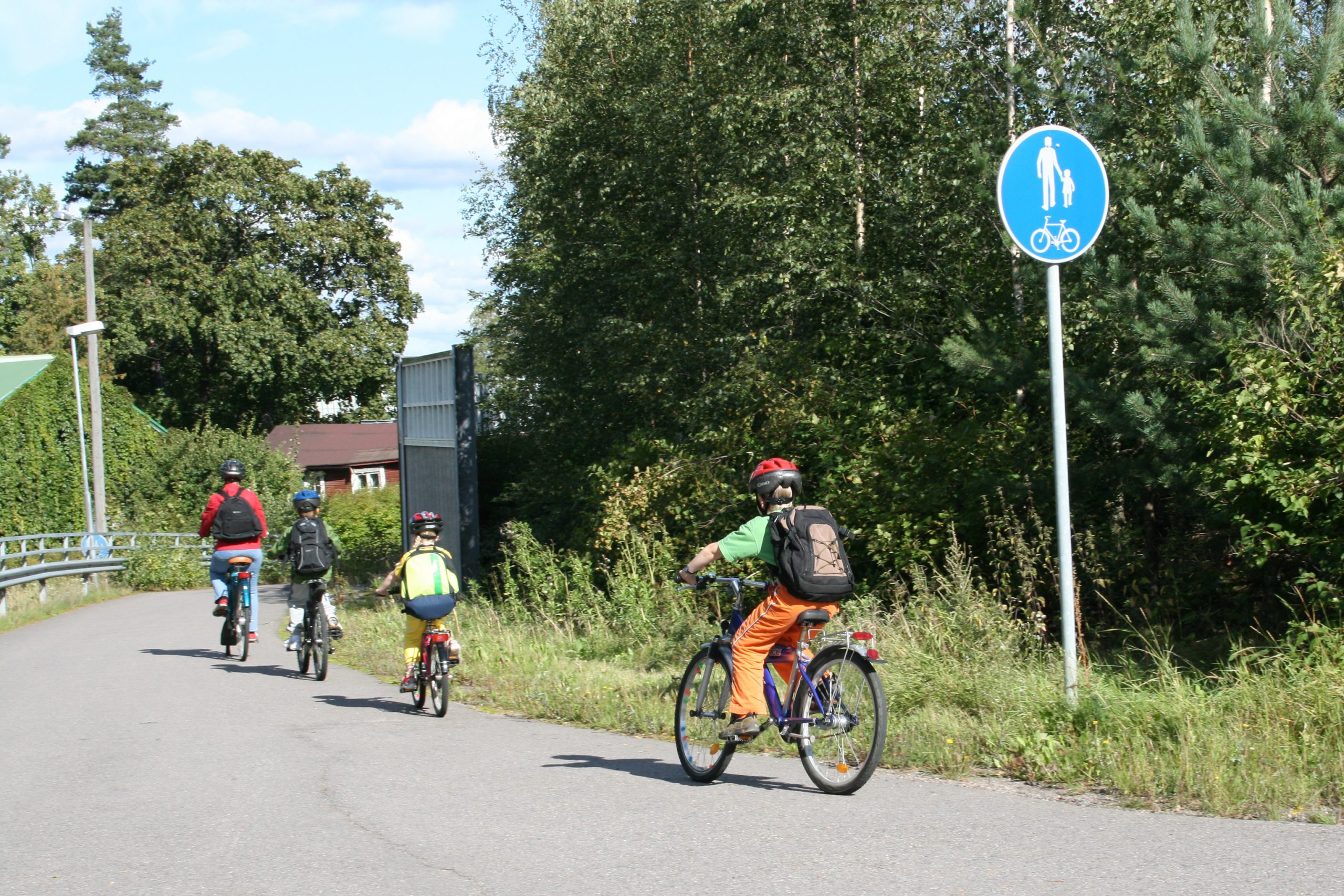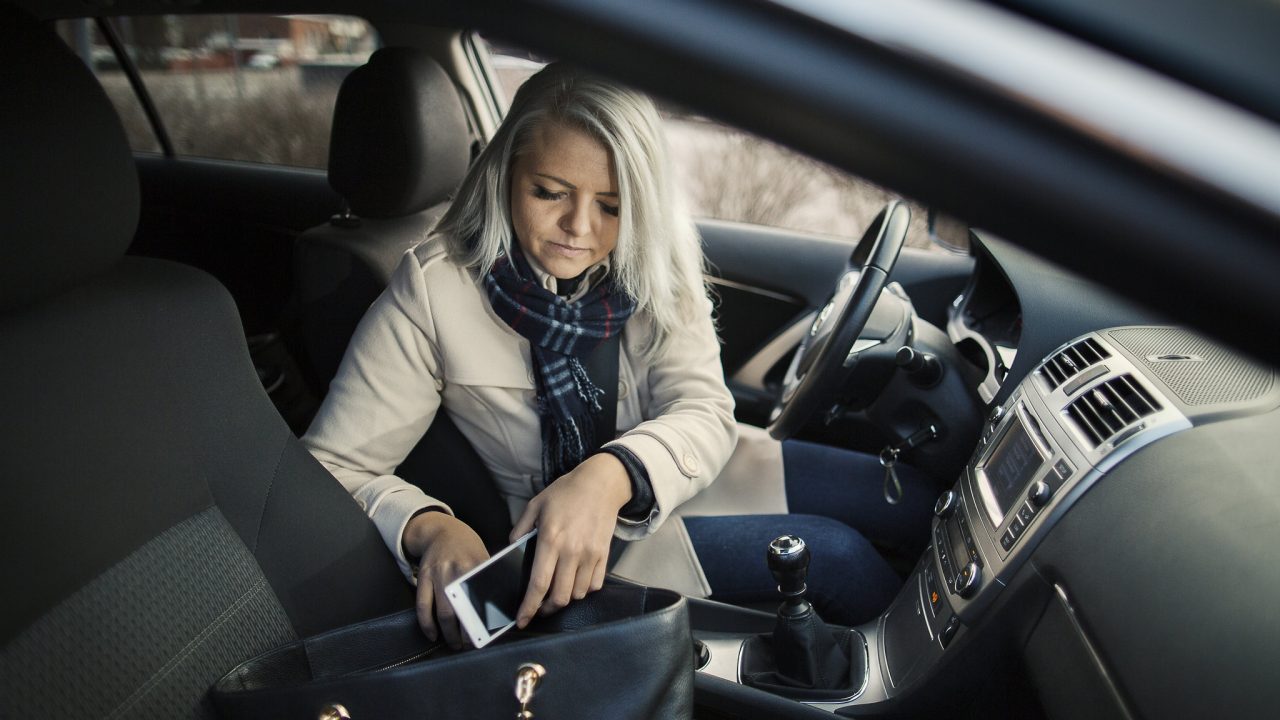
Using devices while driving
Using a phone or other communication device in your hand when driving a motor vehicle is prohibited. GPS devices must be positioned so that they do not obstruct the driver’s view. To avoid temptations, it is encouraged to put the phone out of sight before starting to drive.
Approximately one in seven drivers in Finland end up in a hazardous situation due to the use of a mobile phone while driving. According to traffic accident investigation boards, each year around 3 to 5 fatal traffic accidents involve the use of mobile phones.
The law prohibits the use of communication devices while driving
According to the law, motor vehicle drivers must not use hand-held communication devices while driving. In addition, technical devices must not be used in the vehicle in any way that could make driving difficult or dangerous. The prohibition on distracting use applies to all drivers, including cyclists.
Impact of mobile phone use on driving
Using a mobile phone while driving is problematic in terms of both handling the phone and having a conversation, both of which affect the driver’s attention and coordination. Think carefully whether you need to use your phone at all while driving. Sometimes a phone call can improve your alertness, but it can also be distracting, for example, if the topic of conversation is upsetting.
Using a phone is particularly dangerous in slippery conditions, congested traffic or poor visibility, when the risk of an accident is already higher. Any non-driving activity you engage in is a potential distraction and increases your risk of crashing.
The Finnish Road Safety Council’s recommendation: Don’t make phone calls when driving. If the phone rings, do not answer.
Studies show that both handling a phone and dealing with a message lead to a 0.5 second increase in reaction time. According to traffic researchers, handling a phone
- impacts concentration
- impedes the use of driving controls
- causes variations in vehicle speed and impacts lane discipline, disrupting other traffic
- impacts lane discipline
- can cause hazards when the driver drifts to the middle or the right-hand edge of the road.
If you use a mobile phone while driving:
- Use hands-free devices.
- Position the phone correctly.
- Use the phone only in low and safe traffic.
- Use directory and connection services.
- Use speed dial and redial functions.
- Tell the other person immediately that you are driving.
- Keep it brief.
- Avoid stressful conversations.
The GPS device
The GPS device must be positioned so that it does not obstruct the driver’s view. Its use must not impede the use of driving controls or otherwise impact the driver’s concentration.
When purchasing a GPS device,
- opt for a large screen and ease of use
- check that the device is voice-controlled
- compare the coverage of manufacturers’ map services, and
- think about how you will mount it inside your vehicle.
The GPS device should be positioned carefully.
It should not block or impede visibility. You should be able to glance at the device with as little eye movement as possible. The driver is responsible for the device while driving.
The device must be mounted correctly so that it cannot fall off during the journey or in the event of a collision. The device must not be positioned in the way of air bags.
Practise using your GPS device
You should programme and test your GPS device before you start driving with it. Practise using the device in a familiar environment so that you don’t become too distracted by the device. The safest way to test your device is to first use it in quiet traffic.
Do not operate the GPS device while driving. Stop the vehicle if you have to make changes to the route.
The GPS device does not recognise traffic situations or signals. The driver is responsible for driving, and the instructions given by the device should not be followed unquestioningly.
If something goes wrong, it is best to carry on driving. If you deviate from the suggested route, don’t panic – drive on until the GPS calculates a new route. If the GPS malfunctions, stop where possible, e.g. on a lay-by.
Although GPS navigators can improve safety, any device that demands the driver’s attention is a safety risk if used incorrectly.
